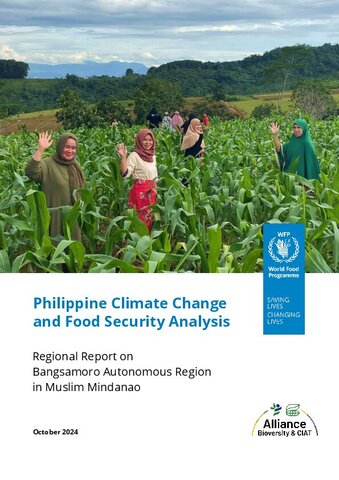
These regions were prioritized for the sub-national level analysis, as these areas were unable to participate in the initial validation of key results of the national-level research undertaken in 2021 by the United Nations World Food Programme and the International Center for Tropical Agriculture, in partnership with nine national government agencies.
To support policy development and resource management, the reports provide government and non-government partners with a better understanding of interplay amongst natural hazards, crop suitability, and economy at the local level. They also present base maps of major livelihood zones at the city and municipal levels, illustrating a visual representation of the main economic activities. These aim to i) enhance existing development and action plans and ii) help determine the most effective way to strengthen the adaptive capacity of the different localities to climate change.
The regional reports can easily be updated since the CCFSA database can incorporate new datasets (small-area poverty estimates, agricultural production data, nutrition, etc.) from national and international government agencies and non-government organizations. CCFSA can also complement current government initiatives like the national colour-coded agricultural guide map of the Department of Agriculture and provide valuable information for smallholder farmers and fisherfolks.


